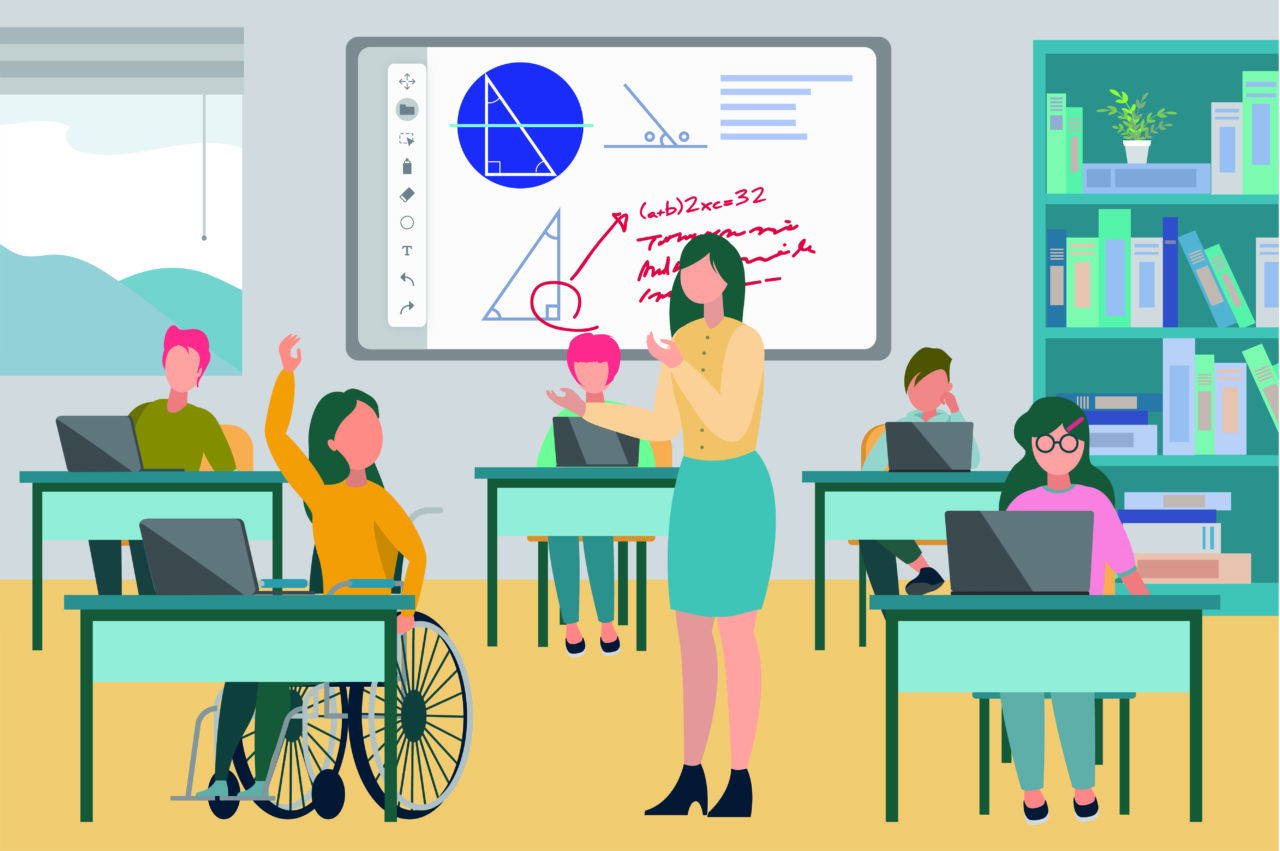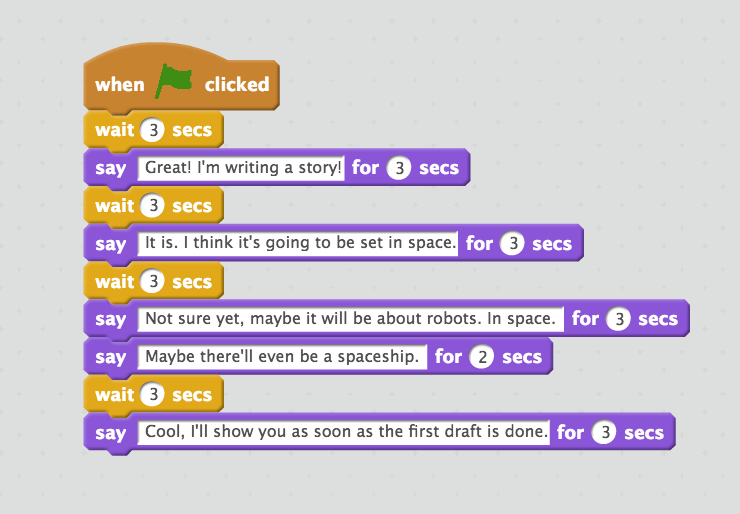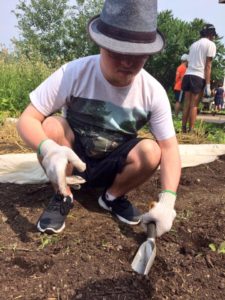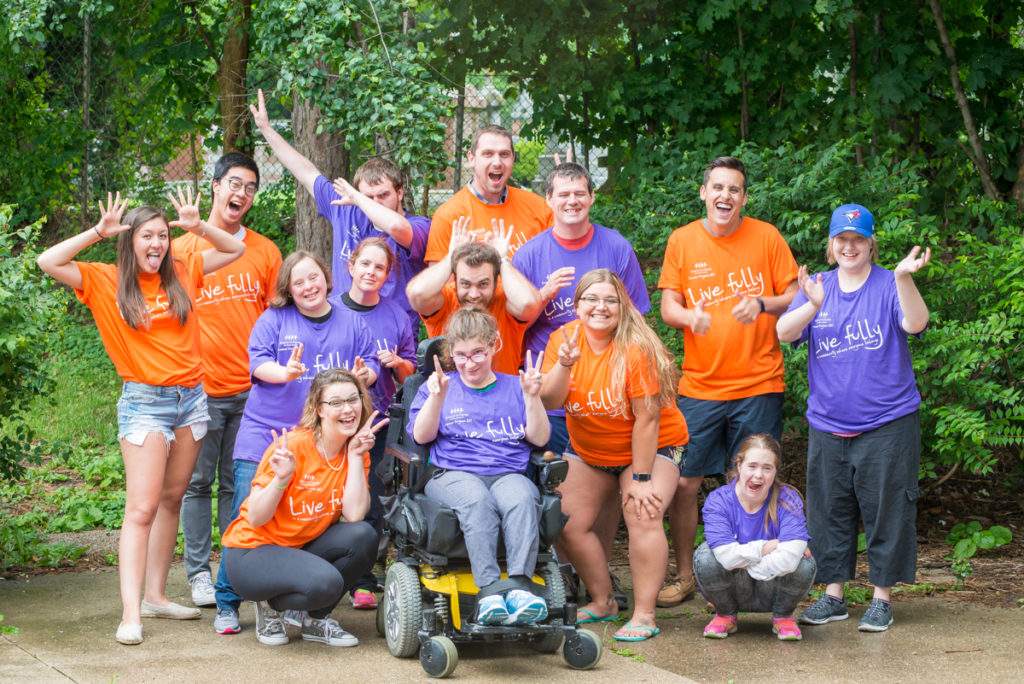The Businesses Behind Educational Technology: Google vs. Apple
The integration of technology into our classrooms serves many beneficial purposes. From new and innovative learning opportunities, to the development of crucial competencies required when working in the 21st century, technology is becoming a requirement in the world of education. When we think of technology in the classroom, there are many different mediums that we use: desktop computers, interactive whiteboards, robotics, Chromebooks, iPads… the list goes on and on! It is interesting to dig deep and investigate the businesses behind the educational technology that we use.
When I think of the technology that I use in my classroom, as well as the technology that the school boards in my region endorse, there are two main contributors: Google and Apple. While both companies provide many educational tools for students and educators to use, they vary in their capabilities and overall scope of applications. Let’s first explore the main two products that these companies provide to assist students in their learning.

Apple’s main product designed for educational purposes is the iPad. It is a sleek, easy-to-use tablet that even the youngest of students can quickly learn how to navigate. One of the most appealing features of the iPad is it’s touchscreen. This allows students of any age or learning stage to touch images and drag-and-drop information. Even in the upper grades, students can use apple products to create videos on a variety of Apple curated apps, such as iMovie. Just last month, I used iMovie to create our elementary school’s virtual graduation ceremony! While things may have changed in the last 10 years or so, when I was in high school, Apple products were heavily used for design type courses, such as photography, yearbook, media courses, etc. Apple has a solid product and a bunch of applications to provide a slew of learning opportunities for students.

Google provides their Chromebook product as a versatile educational tool. Chromebooks have a common computer feel with its trackpad and keyboard, however, some models are equipped with a touch screen to bridge that gap between using a tablet and using a computer. With Chromebooks, “student accounts are linked to the individual school” or the school board, providing them with “full administrative control” (9to5Mac). This would be one of the main differences between the Chromebook and the iPad. With the Chromebook, you are able to sign into any Google account, instantly linking them to their profile and schoolwork. This means that the device is just the vessel to the learning, rather than being a single-source resource (i.e., each student needing to use their own iPad to retrieve their saved information.

(Adapted from Brave in the Attempt)
As we compare the various products, we have to remember that there is a business behind each of these tools with a price tag associated with it. Our school boards, too, have to consider the cost of the products, which plays a large factor in determining which tools will be purchased for classroom use. In the simplest of terms, “iPads are relatively expensive devices” while “Chromebooks, in contrast, are cheap” (9to5Mac). Perhaps, in conjunction with the large amount of product capabilities and applications that Google provides, this is why Google has surpassed Apple in the realm of education devices. As of 2018 in the United States of America, “Chromebooks had 60 percent of the market share” (Digital Information World).
(Digital Information World)
While I have used both Apple and Google products in my own teaching practice, I will admit that I primarily use the Google platform. Not only are Chromebooks a solid product, but I find the Google Apps for Education (GAFE) to be of immense value for my students. Knowing that the schools boards in my area were users of Google products, I became a Google Certified Educator Level 2 before graduating from by Bachelor of Education to prepare myself with the knowledge necessary to not only use these applications properly, but to also be able to integrate them into my teaching practice.

Within the classroom, I use Google apps to help with content delivery and student products, such as making presentations, answering questions, recording research, drafting narratives, etc. As COVID-19 unfolded and Distance Learning became a reality, I heavily relied on GAFE. Students are able to access their schoolwork on an infinite number of devices, whether it be a Chromebook at school or logging into their Google Account at home, due to Google’s “unlimited Drive cloud storage space” (ITC Evangelist). This made it that much easier to transition from school to home learning. The Google products available through the student’s Google Accounts are very compatible with our digital Google Classroom platform, which makes it easier to use, and be loyal to, a brand of products and it’s multitude of capabilities. For example, Google Classroom has integrated capabilities within it to create a quiz on Google Forms or attach a lecture presented on Google Slides, therefore seamlessly weaving together many of the GAFE.
As with any pedagogy, it is better to draw resources from multiple sources rather than limit the students’ exposure to one thing. With that being said, perhaps there will remain a place for both companies in the world of education. Each tool provides students with learning opportunities that prepare them with a breath of 21st Century competencies for whatever their future holds for them. Who can say whether the company that they will work for one day will use primarily Apple or Google products. Or, maybe they will work for a Microsoft company… Uh oh! Luckily, both Google and Apple have programs/processors that prepare students for that cross over (Word, PowerPoint, Excel vs. Docs, Slides, Sheets vs. Pages, Keynote, Numbers). At the end of the day, as long as we continue to discern which digital tool will help to best enhance our teaching instruction, promote engaging learning, and enrich the minds of our students, then we are doing just fine. Keep bringing on the new technology!

Works Cited:
9to5Mac: https://9to5mac.com/2016/01/13/ipads-versus-chromebooks-education/
Brave in the Attempt: https://braveintheattempt.com/2018/05/13/the-big-3-in-the-classroom-apple-google-microsoft/
Digital Information World: https://www.digitalinformationworld.com/2019/03/who-is-winning-in-education-google-apple-microsoft.html
ICT Evangelist: https://ictevangelist.com/google-vs-apple-in-education/
Learning Objects
Teaching Eucharist Ideas
In a Grade 2 classroom, as a connection between their preparation for receiving the sacrament of the First Holy Communion and their study in Science on the life cycle of an animal, the Eucharist could be taught in comparison to that of a butterfly. First, students could either draw a picture of butterfly, or they could draw out the life cycle of a butterfly, from caterpillar to chrysalis to butterfly. Then, each student could share their butterfly pictures. The teacher would then ask them these questions:
- Where do butterflies come from?
- Can anyone explain how they are transformed?
- Did you know that there is a transformation at Mass, too? What is it?
- How is a butterfly’s transformation similar to the transformation at Mass? How is it different?

This provides an opportunity to explain transubstantiation and how this will relate to their receiving the Eucharist for the first time. This conversation will allow students to see that the Holy Eucharist is more than just a piece of bread; it is the body of Christ that helps to nourish our body and spirit.
The word Eucharist comes from a Greek word, eucharistein, which means “thanksgiving.” Not only does receiving the Eucharist remind us of Jesus and the sacrifices that he made for us, but it allows our body and soul to be nourished through the presence of God within us. Celebrating the Eucharist challenges our way of being in the world in that it reorients our life to be more in tune with the presence of God. This removes the worldly distractions around us and allows us to focus on being the best disciple of Christ that we possibly can.
Lesson activity/question prompts: https://www.thereligionteacher.com/liturgy-of-the-eucharist-lesson-plan/
Assistive Technology
Assistive technology is a great way to provide support to students within the framework of the same learning task. In my teaching experience, I have only had students on IEPs that are modified at grade level. Therefore, the assistive technology that I use helps these students to “perform and complete” the same, or very similar, tasks as the rest of the class “with efficiency and independence” (Assistive Technology Tools, pg. 1). As I look at my class list for next year, I know that I have students on alternative programs and modifications at various grade levels, so the study of assistive technology is one that will greatly benefit my teaching practice for many years to come.

In my primary classroom, students incorporate the use of technology to share their understanding or learning of a topic in a variety of ways. I am big on using Google Applications on a regular basis with my students. This proved to be very beneficial as we transitioned into distance learning this past school year. Students in my class were proficient in using Google Docs to type out their thinking, Google Slides to present their information in creative ways, and Google Forms to answer comprehension questions. Each of these platforms provides internal supports for students, such as voice typing capabilities (Tools > Voice Typing), as well as spell check. We also were able to utilize Google Read & Write, which allows students to use voice-to-text or text-to-voice to help them with their reading and writing. When creating products of learning with these Google Apps, students were also able to freely share their assignments with others for real-time collaboration and feedback. By providing immediate feedback, especially with Google Form’s self-marking abilities, students are able to adjust their thinking and make corrections.

Students also used various digital libraries and online literacy activities to assist them with research and/or their daily reading tasks. Programs such as GetEpic, Raz-Kids, and Lexia, contained many assistive tools, such as “read-to-me” capabilities, highlighting text when reading, and immediate definitions of unknown words. These programs definitely helped my struggling readers to be able to learn and perform grade-level tasks independently.
I also found that when my students used technology in new and innovative ways, their typical performance levels changed. For example, when using Scratch coding to create 2 sprites and have them teach each other about something we’ve recently learning in our Social Studies unit, the students who would normally struggle with brainstorming ideas and communicating their thinking in words were able to enter the task at various points and use images to drive their communication and thinking. It was very interesting to see how the “playing field” leveled when we tried something out of the ordinary.

Assistive technology can enhance the learning and ultimate sharing of your students’ thoughts by providing supports for students that would otherwise be hindered from success. By using voice-to-text or text-to-voice, students are able to focus on the content, rather than the spelling of words, typing on the keyboard, etc. Assistive technology helps students to be more independent in their learning, in situations when they would normally be sitting and waiting for teacher support. Not only that, but the integration of technology creates a learning environment in which the learning isn’t so “assign-and-complete” oriented. Technology can provide opportunities for deeper learning. When time is given for students to work on meaningful tasks that cover multiple curriculum expectations, it allows students to truly demonstrate their passion for the subject and a willingness to share their learning with others.
Student voice and choice is of utmost importance in our classrooms, whether you teach the younger primary students or the oldest senior students. Student voice is valued in classrooms where the student and teacher roles are flipped, in that students are becoming the experts on a topic and teaching their peers what they have earned. With technology, teachers no longer have to be the “keeper of wisdom” and teach their students in lecture-based lessons; students have the world available to them online and are able to research, discover, and share their learning with others. Student voice can also be fostered through a partnership between the educator and students by co-constructing success criteria. This can, in turn, go one step further and lead to student choice by having the students have some control over the assignment itself (e.g., How would you like to demonstrate your learning on this topic?). This allows students to choose their medium for communicating their learning in a way that satisfies the co-constructed success criteria. These are all ways that we can continue to foster student voice and choice in authentic ways in our classrooms.
Teaching About Sin/Salvation
I came across this activity idea by Wright Ideas With Susan that is both interactive and rich in it’s learning outcomes. I think it could be used in a grade 2 classroom, as the students prepare for their first reconciliation, or in grades 3-5 leading up to a confession.
The activity starts with students using feathers to hit the bullseye on a target. This proves to be very challenging, but is used to support the learning goal later in the lesson. Following the target activity, the class will read a bible story that contains the theme of sin (e.g., Adam and Eve). This will allow students to discuss the theme of sin, talking about “What did they do in the story that God did not appreciate?”. Then, the teacher can relate the conversation back to the target activity by bringing up the fact that no one got a perfect score and that we all fell short of the target. The bullseye represents the correct action that God was looking for. This will then open a discussion for students to discuss sins, or things that we do wrong.
The subject of salvation comes when the discussion outlines the sins that we commit, and recognizes our need to be forgiven by God for our actions. Jesus died on the cross so that all of our sins, all of the times that we missed the target, were paid for. By believing in God, we receive the Holy Spirit, which helps to guide us to make good choices and actions. Not only that, but we can receive the sacrament of reconciliation, which allows us to repent our sins and be forgiven for the times that we missed the target – to seek salvation.
Differentiating Instruction: Grade 3 Probability Task
This is a Grade 3 Probability lesson taken from the Math Makes Sense textbook. This lesson explores themes of conducting probability experiments, which include the use of tally charts, number cubes, coloured counters, marbles, and spinners. The lesson is divided into 4 parts: Explore, Connect, Practice, and Reflect. Some suggested activity differentiation is outlined next to the lesson instructions.




In conclusion, there are multiple ways for each part of the lesson to be differentiated for different students, given their specific academic and behavioural needs. Many parts of this lesson require hands-on manipulatives, which provide students with concrete tools to help with their learning. Visual examples and cues would be beneficial in communicating and retaining the vocabulary necessity for understanding and completing each activity. Many of the lesson activities could be differentiated by reducing the number and complexity of expectations to assist students with their operational sense, time management and ability to attain to a task. Small groupings or pairings are a beneficial way to assist students in completing each task, using the unit terminology in their vocabulary, and sharing strategies with each other. Check-ins and rephrasing of expectations are useful strategies for whole or small group comprehension.
Similarities/Differences of Primary/Junior Learners
Extend-A-Family Summer Program 2017: A Review
Another Summer has come and gone, but the memories of Summer Program 2017 will last forever. 6 Fantastic Leaders + 1 Coordinator + 1 On-Site Director = 1 Buzzin’ Beehive! Lindsie “Lasagna with Cheese” Driver, Emily “Embrella-Ella-Ella-Eh-Eh” Oatway, Evan “Microwave Evan” Hoffmann, Marc “Marker” Pacia, Lee “from Leon’s” Park, Sabrina “Sabri-NO-NO” Smith, Eli “Y’all I’m from Winterfell” Winterfeld and Spencer “Subzero” Burton. As a team we worked together through the highs and lows of the summer to run a fantastic seven weeks of camp! So let’s take a trip down memory lane as we explore the fun and the excitement of Summer Camp!
Fresh off of celebrating Canada’s 150th birthday, we jet setted around the globe with 25 magnificent world-class travellers. We started off by travelling around the world through a global scavenger hunt. After getting tired of traveling, we brought the world to us! Hands On Exotics came by for a visit and brought numerous animals and birds from around the world! Next, we travelled to the most magical place on Earth, Disney World! We enjoyed a fun filled morning of Disney themed games, including Bowling for Olaf, Pin the Tail on Eeyore and Tinkerbell Badminton. We ended the week off in Africa at the African Lion Safari! We marveled at the height of the giraffes, the flight of the eagles and the strength of the lions! It truly was a fantastic start to an amazing summer!
Calling all athletes! We dribbled our way into week two of camp, with a fan-favourite theme: Get Your Game On! This year, we played so many sports that rivaled the Olympics! Basketball, floor hockey, soccer, soccer baseball, badminton, you name it, we played it! On Wednesday, we danced the morning away with our Aussie friend from X-Movement who let us unleash our X-tra awesome dance abilities! With all the fantastic athletes we saw at camp, we decided to reward everyone with a trophy. We made trophies during craft time and handed them out at the end of the week. We kept active with different sports on Friday, and hit the town to go bowling at Bingemans and swimming at the Waterloo Recreation Complex. This week definitely deserved a gold medal!
We decided to give back to the community on our Vibrant Volunteers week of camp, where our focus was to help other people. We spent a full day at the Family Centre baking cookies, cleaning up toys, and writing a summer camp song! The Mennonite Central Committee stopped by and gave us the supplies needed for us to create care packages for refugees across the globe, and taught us about the importance of volunteer work. We took breaks from volunteering and giving back by playing life-sized Angry Birds, making wind chimes and bird feeders, and dodgeball! At the end of the week, we spent the morning in the sun at the Hacienda Sarria Market Garden planting, weeding, and watering all types of plants, and cooled off swimming at the Waterloo Recreation Complex.


Everyone had their moment in the spotlight at our Hidden Talents week! We hunted for items in a school-wide scavenger hunt, cheered our hearts out with our very own camp cheer, became Minute To Win It all stars, captured all the flags, and made our own flower pots! We were in awe when Mad Science came in with ice and fire and gave everyone the chance to taste a burp! We gave everyone the opportunity to perform their hidden talents and had superb singers, daring dancers, ballin’ basketball tricks, brilliant beatboxers, and we gave out amazing awards to everyone! We hit as many strikes as we could bowling at Kingpin, and ended our week watching the Emoji movie.
As the temperature peaked, we cooled off with Wacky Water Week! Everyday, we refreshed ourselves with a bunch of different water games. Drip Drip Drop, water balloon toss and more water fights than we can count! Participants also painted the leaders in Reverse Paintball and used water balloons, water guns and sponges to undo their painted masterpieces. Everyone also unleashed their inner Da Vinci’s by creating works of art that they took home: tie dye t-shirts! As Wacky Water Week reached its course, we decided to visit the wackiest creatures of them all – the Minions! Our big day trip involved a visit to the theatre where we munched on popcorn, sipped on soda and laughed our banana’s off during Despicable Me 3!
As day program came to a close, there was still two weeks of overnight camp with a lot of fun to be had. We settled into cozy Camp Impeesa with nothing but beautiful nature in sight. We started the week off with a campfire, singing classic around the fire songs such as Down By The Bay, The Moose Song, the Littlest Worm and so many more. Award winning food was served by the staff, being cheered for at every meal. The days went by quickly, being filled with mindfulness colouring books, card games, outdoor activities, and friendship bracelets. The evenings were full of movies, bingo, and a dance on Thursday to finish off a spectacular week. A big hit was the photo scavenger hunt, creating some friendly competition among the participants and leaders. Bags were packed and we headed home Friday afternoon where everyone was excited to see their families, but sad to leave their new found friends and the wonderful relationships that we all built.
Before we knew it, summer program came to a close, leaving behind beautiful memories and new relationships. We want to extend many thanks to those who were involved in making the 2017 Summer Program a success. Shout out to the custodial staff at St. Dominic Savio Elementary School for going above and beyond, once again, to make our stay as welcoming and inclusive as possible. Another shout out to Extend-A-Family staff, who came to visit us and supported us through Summer Program. It has been an unforgettable summer that we will all cherish for many years to come!
Written By: Summer Program Staff 2017
Manipulative Enhancing Math Concepts
Select one manipulative and describe how it could enhance the understanding of a mathematical concept or big idea. Align the tool to a grade and suggest a hands-on task.
Tangram is a puzzle made from 7 differently-sized shapes that, when placed in a specific order, create an image. Tangrams are a great way to reinforce themes within geometry, such as shapes, sides, angles, and vertices. Additionally, through the continued use of tangrams, students are encouraged to recognize shapes and mathematical themes in their everyday life. The different sizes, shapes, and colours add to the sensory stimulation that engages students and keeps them attended to the activity at hand.
I have seen great success in using tangrams in grades as early as kindergarten. Students can be prompted to create an object using tangrams, contributing to their spatial awareness, creativity, and problem solving. Students can also be provided with silhouettes in which they must make their tangram pieces fit. This type of activity has now be enhanced through the use of the Osmo tangram application. The Osmo uses an iPad, tangram shapes, and a mirrored lens over the iPad’s camera to create a digital game that has students align their shapes on the table into the shape displayed on the iPad. The application then takes them through levels and different tangram puzzles using the same shapes. Here’s some more information about this engaging task:







